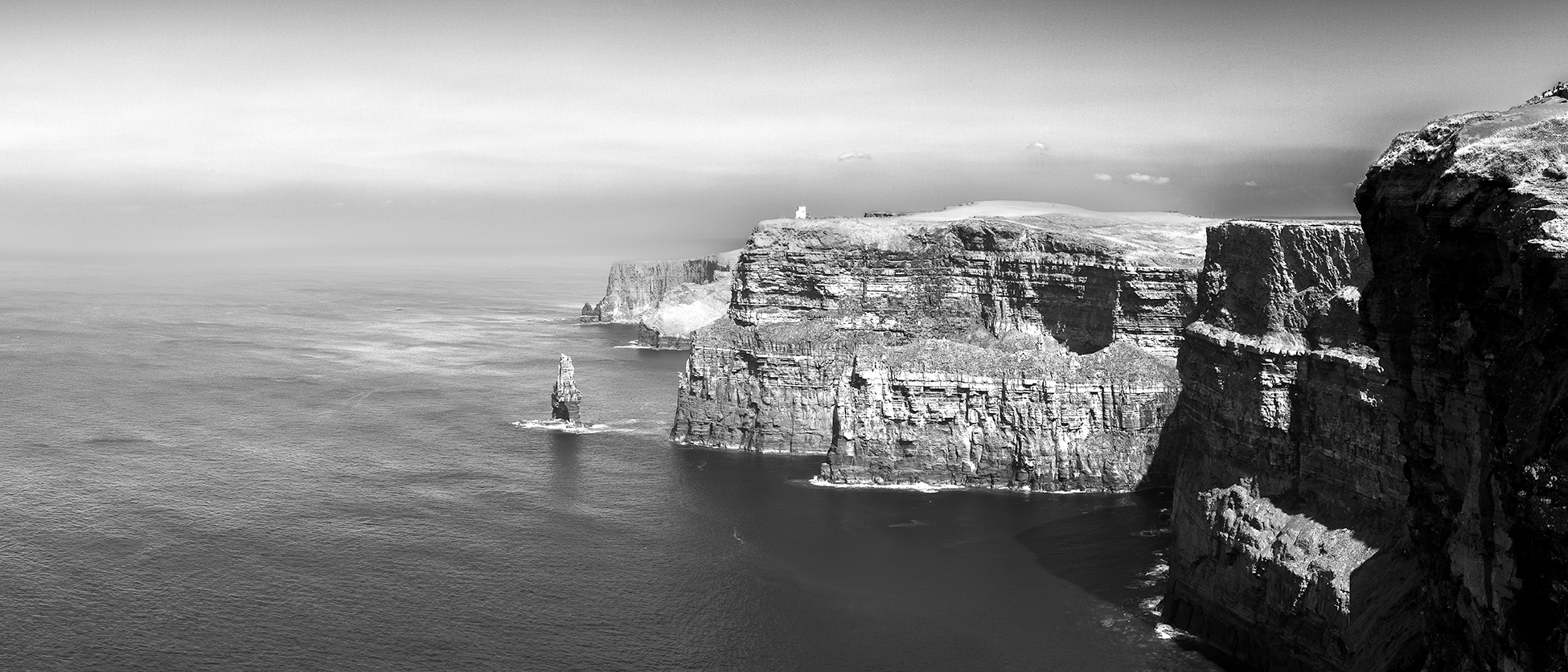From the natural terrace of the southern viewpoint, O’Brien’s Tower rises majestically on the horizon, an ancient sentinel that has dominated the Cliffs of Moher for centuries. Built in 1835 by Sir Cornelius O’Brien to impress visitors, the tower stands out against the sky like a solitary lookout, surrounded by the vastness of the sea and the incessant roar of the waves crashing beneath it. From its summit, the gaze is lost towards the north, where the cliffs rise in a dramatic sequence of spires and spurs, an immense natural cathedral sculpted by the unstoppable force of the elements.
From the southern viewpoint, the perspective is unique and breathtaking: each stratification of the rocks tells the story of forgotten geological eras, a stone book that speaks of vanished oceans and primordial creatures. It is difficult not to feel small and insignificant in front of this natural wonder, where the wind carries with it the taste of salt and the legends of the ancient peoples who venerated these lands as sacred. Yet there is something profoundly peaceful about this place: a serenity that comes from the knowledge that, despite everything, nature follows its course, indifferent to our worries and ambitions.
O’Brien’s Tower, with its sturdy form and solitary presence, seems to remind us that beauty lies not only in size or strength, but also in the capacity to endure, to stand firm and to observe, silent witness to the passage of time and the greatness of the world. From here, with the sea stretching away and the cliffs rising like eternal guardians, it is easy to believe that Ireland is indeed a place suspended between earth and sky, between history and legend, between dream and reality.
This artwork is available as a signed limited edition.
